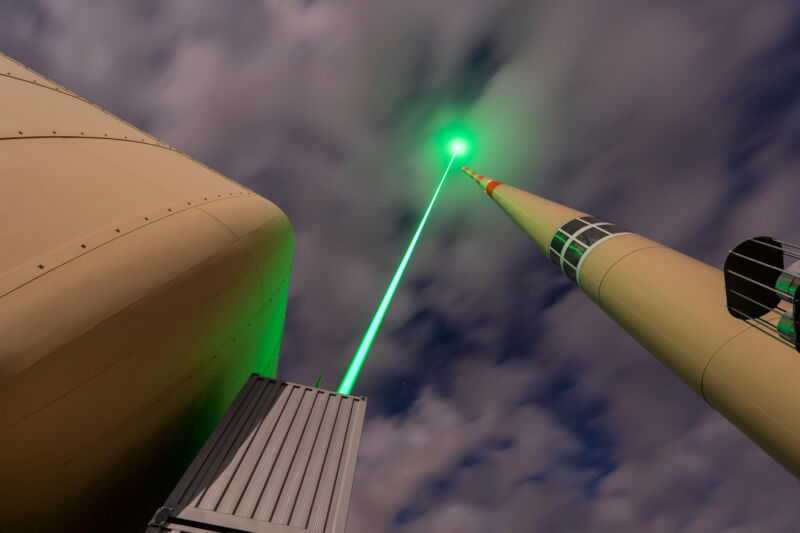Lasers used to guide lightning strikes to a safe target

Enlarge / The laser beam passes near the lightning rod on the Santis Tower. (credit: TRUMPF/Martin Stollberg )
Lightning rods protect buildings by providing a low-resistance path for charges to flow between the clouds and the ground. But they only work if lightning finds that path first. The actual strike is chaotic, and there's never a guarantee that the processes that initiate it will happen close enough to the lightning rod to ensure that things will work as intended.
A team of European researchers decided they didn't like that randomness and managed to direct a few lightning strikes safely into a telecom tower located on top of a Swiss mountain. Their secret? Lasers, which were used to create a path of charged ions to smooth the path to the lightning rod.
Everything's better with lasersThe basic challenge with directing lightning bolts is that the atmospheric events that create charged particles occur at significant altitudes relative to lightning rods. This allows lightning to find paths to the ground that don't involve the lightning rod. People have successfully created a connection between the two by using small rockets to shoot conductive cables to the heights where the charges were. But using this regularly would eventually require a lot of rockets and leave the surroundings draped in cables.